Nyheter
Crypto Regulations Brew as Bitcoin Surges in Institutional Adoption: What Happened in Crypto This Month?
Publicerad
11 månader sedanden
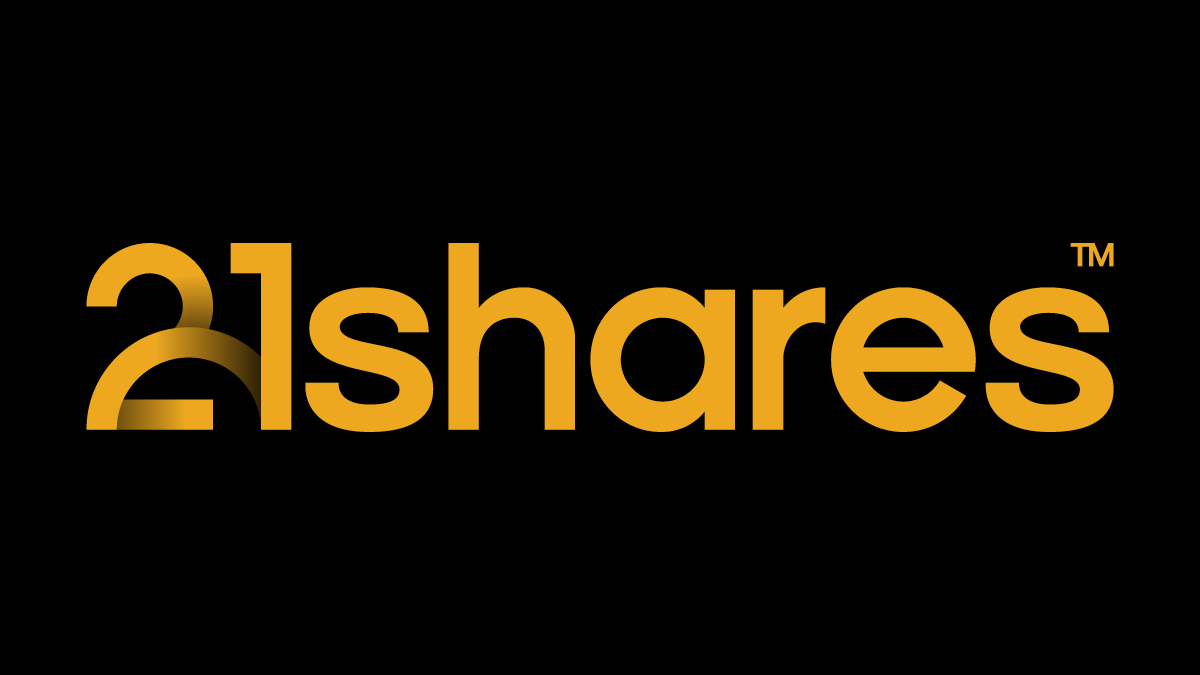
• Crypto Regulations Brew in May As Elections Inch Closer
• Lots of Institutional Demand, Bitcoin to Climb Mt. Gox
• Ethereum’s Watershed Moment
• Chainlink Continues Powering Tokenization
Crypto Regulations Brew in May As Elections Inch Closer
With the first presidential debate scheduled for June 27, regulating crypto is becoming an increasingly inevitable hot topic in the lead-up to the elections. The competition heats up again, reminiscent of the 2020 race. However, this time, it’s Joe Biden who is defending his presidency, and both candidates are even represented on Solana’s blockchain with meme tokens in their names. Republicans have been fiercely embracing crypto in Congress, achieving bipartisan agreement for the first time. Once a skeptic himself, Donald Trump has recently vouched for the industry, leaving the Biden administration in limbo with regard to pending crypto regulations.
Restrictions on crypto custody may be easing, encouraging financial institutions in the U.S. to hold crypto on behalf of their clients. The House passed a bill on May 8, nullifying the Securities and Exchange Commission’s (SEC) 121st Staff Accounting Bulletin. SAB 121 requires banks holding customers’ cryptoassets to present a liability on their balance sheet to reflect their obligation to safeguard them, potentially leading to substantial capital expenses. On May 16, the Senate approved the bill before it landed in the White House, which vocalized its intention to veto it as it would allegedly undermine the SEC’s work to protect investors. The Biden administration has until June 3 to veto. However, if SAB 121 is overturned, it would diversify crypto custodians, only four of which are currently servicing the 11 Bitcoin Spot ETFs, a major concern for Congress. Moreover, the bill would be advantageous for investors who are discouraged from holding crypto outside traditional frameworks.
For years, the distinction between the SEC’s jurisdiction over crypto and that of the Commodities and Futures Trading Commission (CFTC) has been blurry. The Financial Innovation and Technology for the 21st Century Act (FIT21) would provide the CFTC with new jurisdiction over digital commodities and clarify the SEC’s jurisdiction over digital assets offered as part of an investment contract based on the degree of decentralization of a crypto network. The bill has also laid out five conditions for a “decentralized system:”
- No one person can control the network or prevent others from using it. This means that no one can solely decide how it works or who can use it.
- No entity should own more than 20% of its native cryptoasset.
- The decentralized system’s code should be open-source and can’t be majorly modified by a single person. Unless it’s to fix vulnerabilities and improve security, consensus on code updates should be reached through a decentralized governance system.
- No one from the founding team or anyone affiliated with the network should promote its cryptoasset to the public as an investment.
- The cryptoassets minted over time, through the programmatic functioning of the blockchain, should be distributed to the end-user, not a select few.
This sets a new precedent. It’s the first time decentralization enters the legal conversation in that context as a priority, a gauge for how close an asset is to a commodity. Although still pending the green light from the Democrat-controlled Senate, FIT21 has already forged the path for networks to work actively toward achieving sufficient decentralization.
We believe that regulatory clarity is bound to be reached, especially with these two bills brewing in Congress. Many drew parallels between FIT21 and Europe’s iconic crypto framework ratified earlier this year, Markets in Crypto Assets (MiCA). Both legislations suggest conducting a study to better understand and, in turn, better regulate the burgeoning realm of decentralized finance. That said, crypto is still an inevitable topic of discussion in Europe. The European Securities and Markets Authority (ESMA) invited investors, and trade associations, among others, for consultation to assess possible benefits and risks of its Undertakings for Collective Investment in Transferable Securities (UCITS), gaining exposure to cryptoassets and 18 other asset classes. ESMA has until August 7 to gather input. UCITS funds are generally considered safe, well-regulated investments sustaining €12T in market valuation. Thus, the funds are vital for crypto as UCITS accounts for 75% of all collective retail investments in the EU. Thus, if the conclusions of this consultation are in favor of adopting crypto, it would attract an influx of investors and bring more regulated accessibility to this asset class. Moreover, although still under consultation, ESMA’s deliberation adds more credibility to crypto, considering its renowned strict regulatory standards.
Finally, June’s calendar is almost blocked for many anticipated events that would forecast the continued trend of shifting policy. Due to increasing political pressure, we may see inactive bills resurface in the Senate. For example, the bipartisan support for FIT21 could bring back pending bills such as Clarity for Payment Stablecoins and Keep Your Coins. However, this renewed legislative activity alone could not exclusively impact the financial landscape, as macroeconomic headwinds still deeply affect crypto. The next monetary policy meeting will be held on June 12, which will pave a clearer path for rate cuts, with inflation data coming out right before. Following the same sentiment, the U.S. Treasury’s buyback program, which started on May 29, will buy back $2B in weekly bond repurchases. This reduces outstanding debt while increasing overall liquidity, potentially allowing capital to flow into riskier assets.
Lots of Institutional Demand While Bitcoin Climbs Mt. Gox
May was an exciting month for crypto, with institutional interest in Bitcoin growing and inflows increasing after a quiet April, as shown in Figure 1. The 13F filing deadline on May 15 revealed significant institutional exposure to Bitcoin. By the end of Q1, 937 professional investors owned $11B in U.S. Bitcoin Spot ETFs, about 20% of the ETFs’ total assets. In contrast, Gold ETFs had only 95 professional investors in their first quarter post-launch, representing less than 10% of Bitcoin ETFs’ reach. The adoption of Bitcoin is unsurprising given the accessibility that Bitcoin ETFs offer traditional institutions through a regulated investment vehicle. The full breakdown of Bitcoin ETF adoption can be found here.
Figure 1 – U.S. Bitcoin Spot ETF Flows (USD)

Source: Glassnode
Bitcoin’s role as a safe haven was reinforced in Japan, where economic pressures led Metaplanet to adopt Bitcoin as a strategic reserve asset, acquiring over $7M since April. International interest in Bitcoin continued, with the approval and launch of BTC and ETH exchange-traded notes (ETNs) in the U.K. for professional investors, showcasing the growing appetite for the asset class.
Despite the optimism surrounding Bitcoin’s institutional adoption, the market is expected to face a headwind due to a decade-old exploit. Mt. Gox, once handling nearly 70% of all Bitcoin transactions, was hacked in 2014, losing 750K BTC, with 200K later recovered. Reparation initiatives were instituted to reimburse creditors with 142K BTC, 143K BCH, and 69B Japanese yen by October 31. Recent observations reveal that wallets associated with the exchange transferred approximately $9B of assets to a single address, likely part of the reimbursement plan. This rendered Bitcoin unable to break the resistance level at $70K due to the fears of potential sell-offs. However, since investors affected by Mt. Gox are early adopters who likely still believe in the asset class, selling pressure may be milder than expected. Once repayments are completed, another looming market uncertainty should be lifted, allowing Bitcoin to finally move on.
Figure 2 – Mt. Gox BTC Balance in BTC and USD
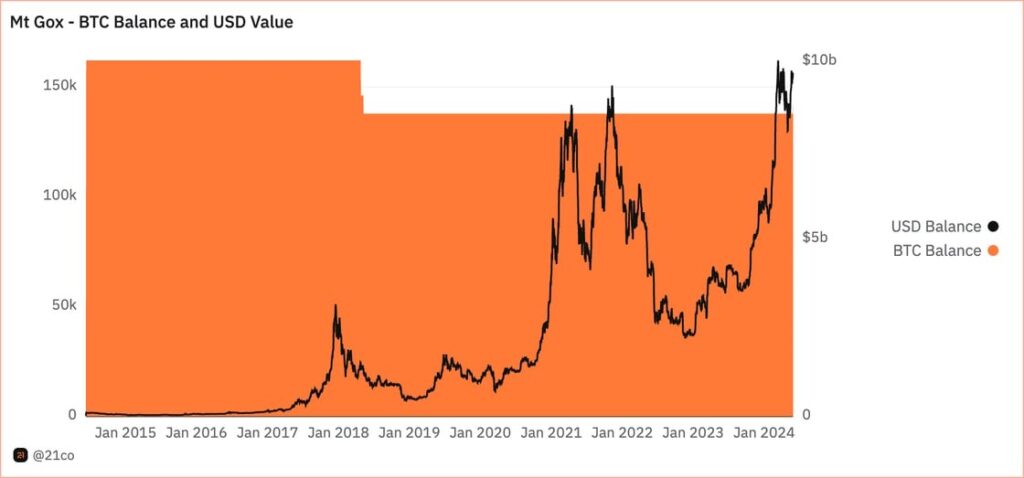
Source: 21co on Dune
Ethereum’s Watershed Moment
The most significant takeaway from May was the SEC’s approval of Ethereum Spot ETFs’ 19b-4 filings on May 23, marking a crucial milestone for the crypto industry. While the approval does not explicitly designate Ethereum as a commodity, it is implied by classifying these ETFs as “commodity-based trust shares.” These products are not tradable until the agency approves the S1 filings, which could take weeks or months; hence, investors must be patient to see the impact of these ETFs. Nevertheless, this moment signals a growing acceptance of Ethereum within regulated investment frameworks, potentially opening the market to significant inflows from Registered Investment Advisors and the local ETF market, with the latter valued at $8T.
Nevertheless, investors should exercise caution in the lead-up to the U.S. ETH ETF launch, given the “buy the rumor, sell the news” phenomenon observed after the BTC ETF launch, where Bitcoin’s price retraced 18% before rallying 90%, as shown in Figure 3. This phenomenon is already occurring, with Ethereum catching up to Bitcoin’s performance when news of the approvals broke. However, the impact of ETH ETFs might differ due to the asset’s distinct attributes.
Figure 3 – ETH and BTC Performance Since December 2023
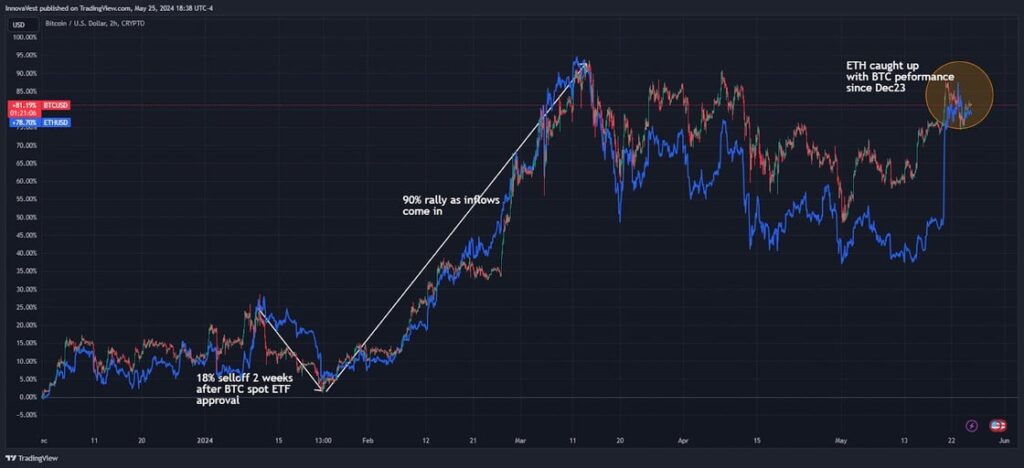
Source: TradingView
U.S. ETH ETFs might follow the trend in Hong Kong, where their counterparts launched alongside BTC ETFs but attracted only about 20% of the latter’s assets under management, around $250M. Further, the absence of staking in the products removes a crucial component of Ethereum’s investment appeal. Investors purchasing these ETFs will miss out on staking rewards, which they could otherwise access by holding and staking ETH directly. On the positive side, the lack of staking features in the ETFs means the yield isn’t diluted for the wider community!
Additionally, ETH’s utility, as collateral in lending agreements or for minting NFTs, to name a few, is sacrificed when investing via ETFs. That said, many institutions accessing Ethereum through these ETFs have no option but to use regulated vehicles. Despite this, they are expected to generate excitement, opening a regulated investment avenue to the next-generation decentralized app store. This is especially significant with the network’s upcoming upgrade in Q1 of 2025. For additional details, refer to our breakdown, discussing some of the anticipated features.
Nonetheless, the SEC approval adds credibility to a broader range of cryptoassets, indicating that Bitcoin is not the only ’legitimate’ one in the eyes of regulators. With FIT21 developing, we could be heading to a future where a wider array of decentralized protocols could be integrated into the stock market, fostering and embracing technological innovation and adoption. Further, Ethereum’s approval represents a significant step forward, highlighting the value of its on-chain ecosystem of decentralized applications. Indeed, May was a landmark month, further solidifying mainstream acceptance, with the approval underscoring broader integration of cryptoassets within traditional financial markets, which could set the stage for tokenization, one of the most disruptive financial innovations in recent years.
Chainlink Continues Powering Tokenization
On May 17, the Depository Trust and Clearing Corporation (DTCC), the world’s largest securities settlement system, which processed $3 quadrillion in securities in 2023, announced it completed a pilot project in collaboration with Chainlink and major financial institutions such as BNY Mellon and JP Morgan. The project builds upon the existing DTCC Mutual Funds Profile Service I (MFPS I), which is the industry standard for transmitting NAV data, such as fund price and rate. The pilot does not affect initial portions of the workflow, such as calculating fund data. The focus was to create a standardized way to disseminate fund information across different blockchains. That said, the project will likely expedite real-world asset tokenization, which has become an increasingly important industry segment, showcased by tokenized government securities growing 20x in assets under management since the start of 2023, from nearly $100M to almost $2B.
Figure 4 – Market Landscape of Tokenized Government Securities by Product

Source: 21co on Dune Analytics
In its existing model, the DTCC service handles the daily transmission of price and rate data for numerous mutual fund securities. The current NAV model connects funds and service providers to distributors, collecting and disseminating relevant data via message queues and file-based methods at regular intervals. On the other hand, Smart NAV extends the dissemination capabilities of MPFS I. Instead of data just being sent through existing channels, it is transformed into a modern data structure that is wrapped into a blockchain transaction, signed by DTCC’s private keys, and finally routed to Chainlink’s Cross-Chain Interoperability Protocol (CCIP). This allows relevant fund data to be sent across almost any blockchain, private or public. Once the fund data is transmitted to these networks, a CCIP-based smart contract forwards the data to the Smart-NAV-specific smart contracts responsible for validating permissions and storing data for parties to consume.

That said, the project’s workflow is a significant improvement as it enables a more efficient way of sharing both real-time and historical information. It also spares experimenting institutions from the need to connect directly to each blockchain where tokenized assets are held, which would be challenging to manage independently. Thus, Chainlink’s role is crucial in creating a seamless cross-chain tokenized environment, which we believe represents the future. We are observing the early stages of this development as tokenized assets currently span across eight networks and are expected to proliferate further.
Although this project is in its pilot phase, we’ll closely monitor it due to its potential impact on the embryonic tokenization industry. It’ll also highlight how blockchain-based systems are superior in standardizing and distributing data, reducing the disruption to existing market practices, and simplifying access to historical data. Thus, we expect these advancements to enhance efficiency, automation, and innovation across various financial industries.
From Chainlink’s perspective, this integration could be crucial for enhancing the network’s economics, given the significantly larger market opportunity for interoperability compared to its other products like smart-contract automation, verifiable on-chain randomness, and data feeds. For context, Chainlink has generated $384M in revenue from price/data feeds versus $750K from CCIP, primarily because feeds have been Chainlink’s oldest and most established product. However, CCIP has the potential to generate much higher revenue, as the total addressable market for tokenization is expected to reach $10T by 2030. A key factor in achieving this will be the interconnectivity between different counterparties and the seamless onboarding of consumers, who won’t need to differentiate between various layers of infrastructure.
Next Month’s Calendar
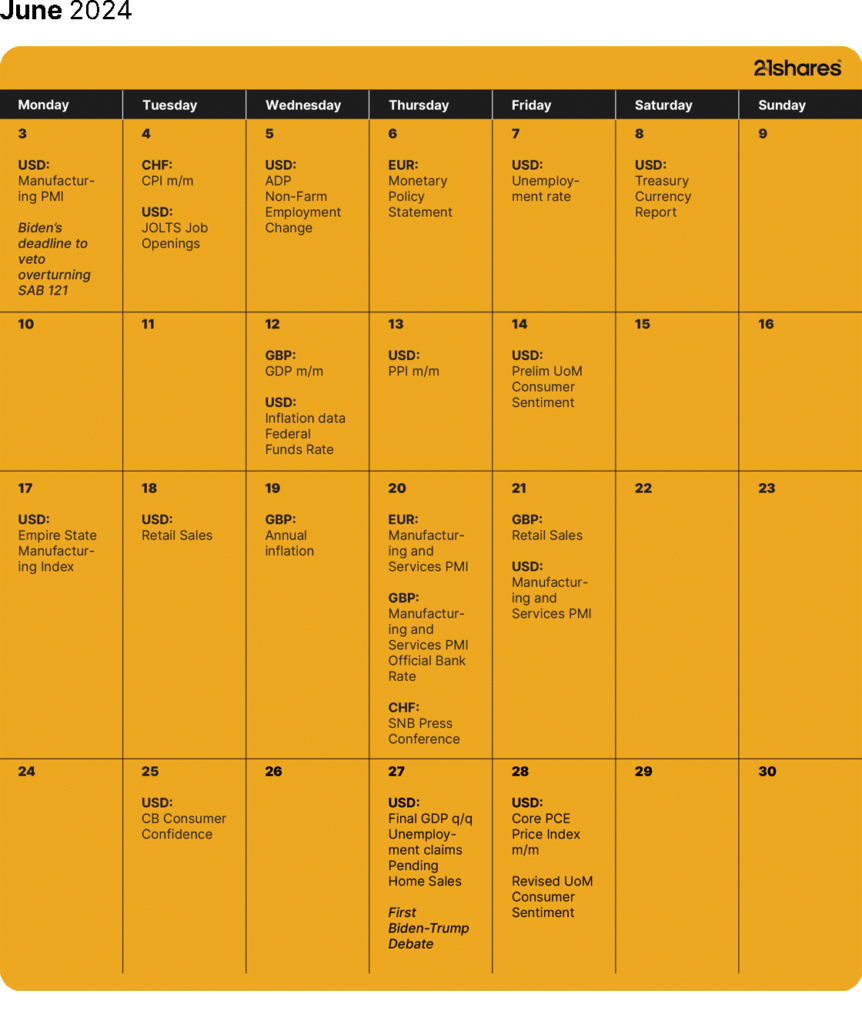
Source: Forex Factory, 21Shares
Research Newsletter
Each week the 21Shares Research team will publish our data-driven insights into the crypto asset world through this newsletter. Please direct any comments, questions, and words of feedback to research@21shares.com
Disclaimer
The information provided does not constitute a prospectus or other offering material and does not contain or constitute an offer to sell or a solicitation of any offer to buy securities in any jurisdiction. Some of the information published herein may contain forward-looking statements. Readers are cautioned that any such forward-looking statements are not guarantees of future performance and involve risks and uncertainties and that actual results may differ materially from those in the forward-looking statements as a result of various factors. The information contained herein may not be considered as economic, legal, tax or other advice and users are cautioned to base investment decisions or other decisions solely on the content hereof.
Du kanske gillar
-


Dogecoin, the meme that made it
-
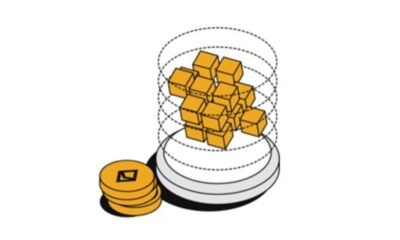

Stablecoins: The real powerhouse of crypto
-
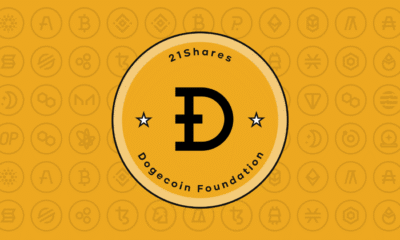

Dogecoin in a portfolio: A small 1% allocation has a loud bark!
-
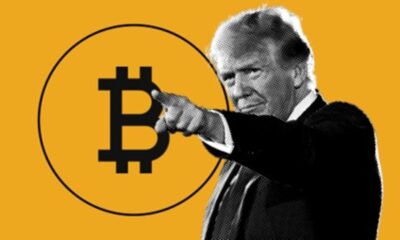

Trump’s trade war puts Bitcoin in the spotlight
-
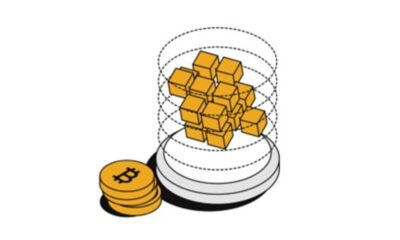

Bitcoin supply on crypto exchanges hits 5-year low and that’s a good sign
-
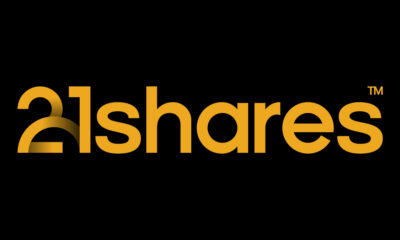

Markets Swing Wildly After Tariff Shock – Bitcoin Rebounds Strongly
Nyheter
Europeisk försvars-ETF når 10 miljoner dollar under den första noteringsveckan
Publicerad
1 timme sedanden
20 april, 2025
HANetf, Europas första och enda oberoende white-label UCITS ETF och ETC-plattform, och ledande leverantör av digitala tillgångs-ETPer, är glada att kunna meddela att Future of Defence UCITS ETF (ticker: ASWC) nu har ackumulerat 2,00 miljarder dollar i förvaltat kapital (AUM).
Bara under 2025 har ETFen attraherat 1,07 miljarder dollar i nya nettotillgångar. Detta, tror vi, till stor del har drivits av Europas kapplöpning att återupprusta sig mitt i växande frågor kring tillförlitligheten i USA:s stöd. USA pausade nyligen militärt bistånd till Ukraina, vilket ledde till att underrättelsedelningen pausades och Kiev blev oförmöget att använda vissa amerikanska vapen. Detta var en tydlig varning till europeiska ledare – USA kan överge dem när som helst.
Efter ett decennium av att inte ha uppnått 2 %-målet av BNP har Europa tillsammans underutnyttjat med uppskattningsvis 850 miljarder euro. Men nu, med ökande geopolitiska spänningar och ifrågasatt amerikanskt militärt stöd, ser de europeiska NATO-medlemmarna över sina försvarsstrategier och ökar sina militära utgifter kraftigt. För att återuppbygga och modernisera sina väpnade styrkor riktar regeringarna dessa förnyade investeringar mot europeiska försvarsföretag – vilket stärker kontinentens strategiska självförsörjning.
Europas upprustning handlar inte bara om att spendera mer – det handlar om att bygga europeiskt oberoende och autonomi inom försvaret. För att minska beroendet av amerikansk utrustning prioriterar EU europeiskt tillverkade vapen, fordon och system, vilket ger den europeiska försvarssektorn en stark medvind.
ASWC ETF syftar till att ge exponering mot NATO och NATO+-allierades försvars- och cyberförsvarsutgifter. Unikt nog använder försvars-ETF en ”NATO-skärm”, vilket begränsar exponeringen mot företag med säte i NATO eller NATO+-allierades medlemsstater.
På detta sätt försöker ETFen att anpassa sig till värderingarna hos investerare som kan ha oro över försvarsinvesteringar, men inte kan ignorera det rådande politiska klimatet och därför söker en smartare och mer genomtänkt strategi. NATO är en defensiv allians och anger själva att ”avskräckning och försvar är en av dess kärnuppgifter” – att fokusera på företag som är verksamma i NATO-allierade länder begränsar möjligheten att ETFens beståndsdelar är företag som är verksamma i länder som en dag skulle kunna bli motståndare till alliansen.
HANetf lanserade nyligen Future of European Defence UCITS ETF (ticker: (8RMY) som exkluderar USA och syftar till att fånga upp Europas upprustning. Som ett europeiskt företag anser HANetf att det är en plikt att stödja investeringar i europeiskt försvar i takt med att kontinenten försöker stärka sin säkerhet. 8RMY ETF har sedan dess överstigit 10 miljoner dollar i förvaltat kapital under sin första noteringsvecka.
På liknande sätt använder 8RMY ”NATO-skärmen” för att begränsa exponeringen mot företag med säte i NATO eller NATO+-allierade medlemsstater.
Hector McNeil, medgrundare och VD för HANetf, kommenterar:
”USA har skickat ett budskap till Europa och det har mottagits tydligt och tydligt. Amerikanskt militärt bistånd, som en gång ansågs vara en garanti, är nu osäkert – och med den osäkerheten kommer ett tydligt direktiv. Europa måste anpassa sig till en värld där USA inte är garant för säkerhet; Europa måste förbereda sig på att försvara sig ensamt.
”Detta har inte gått investerare obemärkt förbi, med stark kursutveckling för europeiska försvarsaktier. Företag som tyska Rheinmetall, brittiska BAE Systems och franska Thales har potentiellt nytta av det. Future of Defence UCITS ETF (ticker: ASWC) gör det möjligt för investerare att få exponering mot dessa företag (och andra) på ett diversifierat sätt.” ”ETFens NATO-screening skiljer den från sina konkurrenter genom att säkerställa att investerare får exponering mot NATO och NATO+-allierade försvarsföretag, samtidigt som de undviker företag som är verksamma i länder som en dag skulle kunna bli motståndare till alliansen. Ingen annan försvarsfokuserad ETF inkluderar denna NATO-screening och som sådan är NATO-ETF:n verkligen unik.
”För de som söker mer fokuserad exponering lanserade vi nyligen Future of European Defence UCITS ETF (ticker: 8RMY), och den har överstigit 10 miljoner dollar i förvaltat kapital under sin första handelsvecka. Vi är ett europeiskt företag, och som sådan anser vi att det är vår plikt att stödja investeringar i europeiskt försvar i ett så avgörande ögonblick. Denna ETF exkluderar amerikanska aktier och syftar till att fånga upp Europas upprustning.”
Handla 8RMY ETF
Future of European Defence UCITS ETF (ticker: 8RMY) är en europeisk börshandlad fond. Denna fond handlas på flera olika börser, till exempel Deutsche Boerse Xetra och Euronext Paris. Av den anledningen förekommer olika kortnamn på samma börshandlade fond.
Det betyder att det går att handla andelar i denna ETF genom de flesta svenska banker och Internetmäklare, till exempel Nordnet, SAVR, DEGIRO och Avanza.
Handla ASWC ETF
HANetf Future of Defence UCITS ETF (ASWC ETF) är en europeisk börshandlad fond. Denna fond handlas på flera olika börser, till exempel Deutsche Boerse Xetra och London Stock Exchange. Av den anledningen förekommer olika kortnamn på samma börshandlade fond.
Det betyder att det går att handla andelar i denna ETF genom de flesta svenska banker och Internetmäklare, till exempel Nordnet, SAVR, DEGIRO och Avanza.
Nyheter
Hur investerar jag i ETFer som fokuserar på breda vallgravar?
Publicerad
2 timmar sedanden
20 april, 2025
Vissa företag har lyckats skapa en strategisk fördel gentemot sina konkurrenter. Metaforiskt kallas detta för breda vallgravar, vilket återspeglar dessa företags starkt befästa marknadsposition. Sådana konkurrensfördelar kan bero på ett varumärkes särprägel eller på en forsknings- och utvecklingsfördel baserad på patent. En vallgrav kan också vara resultatet av territoriell distribution eller produktionsrättigheter som ett företag kan göra anspråk på. En annan möjlighet är en stark position genom den utbredda användningen av företagets produkter bland kunderna, vilket gör det svårt för de senare att byta till andra leverantörer. Dessutom kan vissa företag producera sina varor mycket billigare än sina konkurrenter.
För att kunna utvärdera sådana konkurrensfördelar måste analytiker noggrant undersöka verksamheten, konkurrenssituationen och företagens strategiska tillvägagångssätt. Resultaten kan sedan användas för att skapa ett index som kan spåras med ETFer.
I den här investeringsguiden hittar du alla ETFer som fokuserar på företag med en bred vallgrav. Vi har identifierat sex index som spåras av sex olika börshandlade fonder. Den årliga förvaltningskostnaden ligger på mellan 0,39 och 0,52 procent per år.
Breda vallgravar ETFer i jämförelse
När man väljer en ETF med fokus på breda vallgravar bör man överväga flera andra faktorer utöver metodiken för det underliggande indexet och prestanda för en ETF. För bättre jämförelse hittar du en lista över alla breda vallgrav ETFer med detaljer om namn, kortnamn, förvaltningskostnad, utdelningspolicy, hemvist och replikeringsmetod. För ytterligare information om någon av de olika börshandlade fonderna klicka på kortnamnet i tabellen nedan.
| Namn ISIN | Kortnamn | Avgift % | Utdelnings- policy | Hemvist | Replikerings- metod |
| VanEck Morningstar US Sustainable Wide Moat UCITS ETF IE00BQQP9H09 | GMVM | 0.49% | Ackumulerande | Irland | Fysisk replikering |
| VanEck Morningstar Global Wide Moat UCITS ETF IE00BL0BMZ89 | VVGM | 0.52% | Ackumulerande | Irland | Fysisk replikering |
| Frankfurter UCITS ETF Modern Value LU2439874319 | C9DF | 0.52% | Utdelande | Luxemburg | Fysisk replikering |
| VanEck Morningstar US Wide Moat UCITS ETF A IE0007I99HX7 | WMOT | 0.46% | Ackumulerande | Irland | Fysisk replikering |
| L&G Global Brands UCITS ETF USD Acc IE0007HKA9K1 | TOPB | 0.39% | Ackumulerande | Irland | Fysisk replikering |
| VanEck Morningstar US SMID Moat UCITS ETF A IE000SBU19F7 | SMTV | 0.49% | Ackumulerande | Irland | Fysisk replikering |
Nyheter
WELL ETF för den som tror på den globala IT-sektorn
Publicerad
3 timmar sedanden
20 april, 2025
Amundi S&P Global Information Technology ESG UCITS ETF DR EUR (D) (WELL ETF) med ISIN IE000GEHNQU9, försöker följa S&P Developed Ex-Korea LargeMidCap Sustainability Enhanced Information Technology-index. Det S&P-utvecklade ex-Korea LargeMidCap Sustainability Enhanced Information Technology-indexet spårar stora och medelstora företag från IT-sektorn. Aktierna som ingår filtreras enligt ESG-kriterier (miljö, social och bolagsstyrning).
Den börshandlade fondens TER (total cost ratio) uppgår till 0,18 % p.a. Amundi S&P Global Information Technology ESG UCITS ETF DR EUR (D) är den billigaste ETF som följer S&P Developed Ex-Korea LargeMidCap Sustainability Enhanced Information Technology-index. ETFen replikerar det underliggande indexets prestanda genom fullständig replikering (köper alla indexbeståndsdelar). Utdelningarna i ETFen delas ut till investerarna (Årligen).
Amundi S&P Global Information Technology ESG UCITS ETF DR EUR (D) är en liten ETF med tillgångar på 27 miljoner euro under förvaltning. ETF:n lanserades den 20 september 2022 och har sin hemvist i Irland.
Investeringsmål
AMUNDI S&P GLOBAL INFORMATIONSTEKNOLOGI ESG UCITS ETF DR – EUR (D) strävar efter att replikera, så nära som möjligt, resultatet för S&P Developed Ex-Korea LargeMidCap Sustainability Enhanced Information Technology Index (Netto Total Return Index). Denna ETF har exponering mot stora och medelstora företag i utvecklade länder. Den innehåller uteslutningskriterier för tobak, kontroversiella vapen, civila och militära handeldvapen, termiskt kol, olja och gas (inkl. Arctic Oil & Gas), oljesand, skiffergas. Den är också utformad för att välja ut och omväga företag för att tillsammans förbättra hållbarhet och ESG-profiler, uppfylla miljömål och minska koldioxidavtrycket
Handla WELL ETF
Amundi S&P Global Information Technology ESG UCITS ETF DR EUR (D) (WELL ETF) är en europeisk börshandlad fond. Denna fond handlas på flera olika börser, till exempel Deutsche Boerse Xetra.
Det betyder att det går att handla andelar i denna ETF genom de flesta svenska banker och Internetmäklare, till exempel Nordnet, SAVR, DEGIRO och Avanza.
Börsnoteringar
Största innehav
Denna fond använder fysisk replikering för att spåra indexets prestanda.
| Namn | Valuta | Vikt % | Sektor |
| NVIDIA CORP | USD | 20.01 % | Informationsteknologi |
| MICROSOFT CORP | USD | 19.23 % | Informationsteknologi |
| APPLE INC | USD | 17.34 % | Informationsteknologi |
| ASML HOLDING NV | EUR | 6.30 % | Informationsteknologi |
| SAP SE / XETRA | EUR | 2.48 % | Informationsteknologi |
| SALESFORCE COM | USD | 2.20 % | Informationsteknologi |
| ADOBE INC | USD | 2.06 % | Informationsteknologi |
| ADVANCED MICRO DEVICES | USD | 2.02 % | Informationsteknologi |
| QUALCOMM INC | USD | 1.94 % | Informationsteknologi |
| CISCO SYSTEMS INC | USD | 1.88 % | Informationsteknologi |
Innehav kan komma att förändras.

Europeisk försvars-ETF når 10 miljoner dollar under den första noteringsveckan

Hur investerar jag i ETFer som fokuserar på breda vallgravar?

WELL ETF för den som tror på den globala IT-sektorn

Dogecoin, the meme that made it

VSUI ETN spårar priset på kryptovalutan SUI

Fonder som ger exponering mot försvarsindustrin

Crypto Market Risks & Opportunities: Insights on Bybit Hack, Bitcoin, and Institutional Adoption

Montrose storsatsning på ETFer fortsätter – lanserar Sveriges första globala ETF med hävstång

Warren Buffetts råd om vad man ska göra när börsen kraschar

Svenskarna har en ny favorit-ETF
Populära
-

 Nyheter4 veckor sedan
Nyheter4 veckor sedanFonder som ger exponering mot försvarsindustrin
-

 Nyheter3 veckor sedan
Nyheter3 veckor sedanCrypto Market Risks & Opportunities: Insights on Bybit Hack, Bitcoin, and Institutional Adoption
-

 Nyheter2 veckor sedan
Nyheter2 veckor sedanMontrose storsatsning på ETFer fortsätter – lanserar Sveriges första globala ETF med hävstång
-

 Nyheter4 veckor sedan
Nyheter4 veckor sedanWarren Buffetts råd om vad man ska göra när börsen kraschar
-

 Nyheter3 veckor sedan
Nyheter3 veckor sedanSvenskarna har en ny favorit-ETF
-

 Nyheter2 veckor sedan
Nyheter2 veckor sedanMONTLEV, Sveriges första globala ETF med hävstång
-
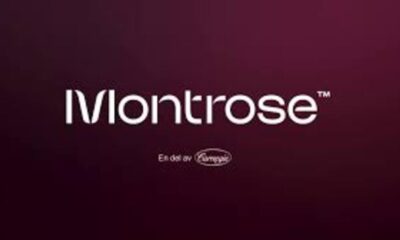
 Nyheter4 veckor sedan
Nyheter4 veckor sedanFastställd utdelning i MONTDIV mars 2025
-

 Nyheter2 veckor sedan
Nyheter2 veckor sedanSju börshandlade fonder som investerar i försvarssektorn


